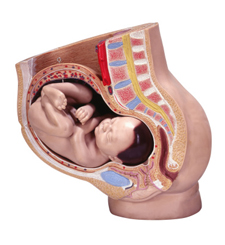Webster Technique

Subluxations where the sacrum joins the pelvis (hip) may prevent the baby from assuming the best possible position for birth.
A pregnant woman’s pelvis is constantly changing to accommodate her growing baby and prepare for the birthing process, which can lead to misalignment and compromised nerve function. This can not only cause pain and instability, but can also affect labor and delivery.
Developed specifically for pregnant mothers by the late Larry Webster, D.C., the Webster chiropractic technique releases stress on the pelvis, relaxing surrounding ligaments and reducing the sacral subluxation to restore more normal function.
Sacral subluxation may affect the nerves in the pelvis and cause the tightening and twisting of pelvic muscles and ligaments. The goal of the adjustment is to reduce the effects of subluxation and the associated dysfunction of the SI joint. The result? Neurobiomechanical function in the sacral/pelvic region is improved, benefiting pregnant mothers or others with sacral subluxations.
Successful Approach
The July/August 2002 issue of the Journal of Manipulative and Physiological Therapeutics reports that 82% of chiropractors using the Webster Technique reported success.
Sometimes, using the Webster Technique the associated dysfunction of the sacroiliac joint can be reduced with just one adjustment. But most chiropractors recommend care throughout pregnancy and even into labor to insure proper pelvic neurobiomechanical function.
Because the Webster Technique relies on the inborn intelligence of the mother and baby, there is little risk. The Webster Technique is based on the positive experiences of pregnant patients, the clinical experience of its many practitioners, academic studies on the subject of sacral subluxation and its consequences to proper pelvic function.
More information can be found here – The Webster Technique: Definition, Application and Implications.
